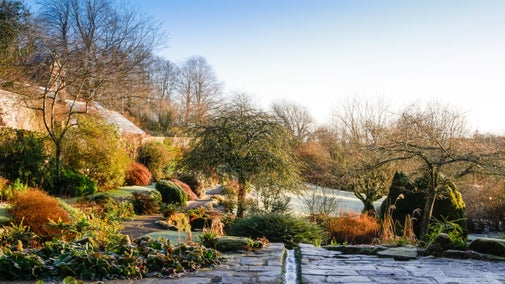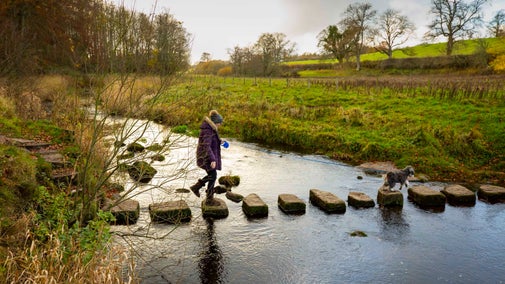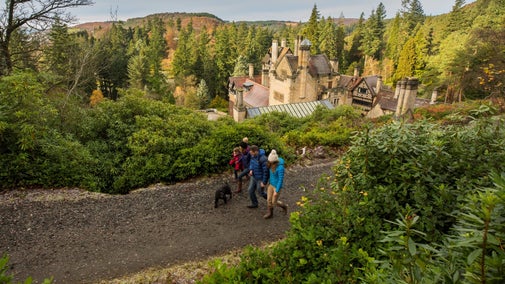River walk at Wallington
North East
Take a tranquil walk along the banks of the River Wansbeck, crossing over bridges and stepping stones, it's the perfect spot for a stroll whatever the season. Explore the woods and see what wildlife you can find on this riverside walk.
Near to
WallingtonStart point
Wallington Courtyard, grid ref: NZ028843Trail information
Caution
At certain times throughout the year, water levels can be high on the River Wansbeck, which means the stepping stones may be underwater. Speak to the team on your arrival at Wallington who can advise if the stepping stones are open on your visit. If they are closed, please take extra care and head along the road to cross the river using Paine’s Bridge instead.
More near here
Wannie Line walk
Follow this circular walk along the Wannie and Rothbury railway lines. As you journey through a variety of habitats including farmland, woodland, hedgerows and streams, keep an eye out for birds, wildflowers and fungi that have reclaimed this once industrial landscape.

Get in touch
Our partners

We’ve partnered with Cotswold Outdoor to help everyone make the most of their time outdoors in the places we care for.
You might also be interested in
Walking
Explore some of the finest landscapes in our care on coastal paths, accessible trails, woodland walks and everything in between. Find the best places to walk near you.

Things to see and do in the garden at Wallington
Discover the colourful, fragrant plants in the Walled Garden, take in the different spaces and areas and look out for the peaceful Mary Pool.

Visiting Wallington with your dog
Wallington is a two pawprint rated place. Find out where you can walk your dog at Wallington, from the miles of parkland and woodland trails to the historic walled garden.

Eating and shopping at Wallington
Stop by the Clocktower Café at Wallington for a selection of hot and cold drinks, and homemade bakes. Then browse the shop for gifts, books, homewares and more.

Tips for walking near livestock at Wallington
The wider estate at Wallington has several cattle and sheep farms. Read our guide to staying safe around the animals when you’re walking along the estate's footpaths and trails.

Walking in the North East
Explore some of the best walking routes in North East England with the National Trust. From scenic coastal walks and historic countryside trails to family-friendly and dog-friendly paths, discover unforgettable walks across Northumberland, Tyne & Wear, and County Durham.

Cotswold Outdoor: our exclusive walking partner
Learn about the National Trust’s ongoing partnership with Cotswold Outdoor. Find out how they help us care for precious places and the exclusive discount available for National Trust supporters.

Staying safe at National Trust places
The special places in National Trust care sometimes come with a few risks for visitors, be it coastline or countryside. Find out how to keep safe throughout your visits.

